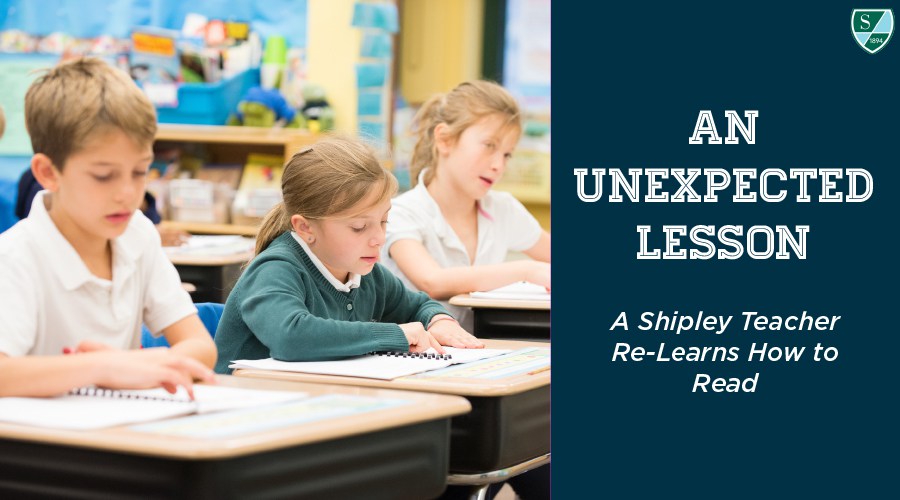Picture this: there’s an instructor at the front of the class, and she’s teaching students how to read.
Here’s the twist: these “students” aren’t your typical elementary school students – they’re your typical elementary school teachers. And in the workshop, titled “The Challenge of Learning to Read,” we were going to get to experience all over again what it was like to learn to read just as our students do in our classrooms every day.
Stepping Inside the Classroom
The workshop was set up like this: the instructor projected a passage filled with many unfamiliar symbols and asked us to read it aloud. In spite of our confused expressions, the instructor explained that she was going to teach us to read this passage.
At our desks, we each had a set of cards with symbols on them. Some cards had symbols we were familiar with, such as “k” and “w”, and made the same sounds we usually associate with them.
But then the instructor took us out of our comfort zone. She explained that the symbols we were unfamiliar with made the sounds “th” and “ing” to mimic the fact that digraphs in our language make sounds we would not expect from these letters. By using unfamiliar symbols, it was like learning these digraphs all over again.
After our instructor finished her overview, it was time for some “class activities,” much like the ones we do with our own students. For example, our instructor dictated words and we lifted up the card if we heard the sound in that word. We also practiced reading phrases and sentences that were projected, incorporating all of the symbols we had learned.
Moving Beyond the Basics
At this point, we were feeling more confident with our abilities involving the symbols – but we were in for another surprise. Now our instructor dictated words and told us to write them down using the new symbols. By the time I found the card to remind myself how to write a symbol, she started reading the next word. Someone said, “Wait!” and the instructor replied, “I expect you to keep up with the class.” When asked to repeat a sentence, the instructor replied, “I will say it again, but you really should listen the first time.” Hearing these familiar responses coming from the instructor, we experienced the frustration that our own struggling readers have when trying to keep up.
After this exercise, the instructor projected the original passage she had asked us to read. While, much to our surprise, we were able to get through the entire passage, we certainly struggled, sounding like a class of children first learning to read.
The instructor then asked, “Who would like to answer some comprehension questions?” Our unanimous response: "Yeah, right!" All our effort was spent sounding out the words; we weren’t focused at all on content. I was able to remember that the passage had something to do with a king wishing he could go fishing, but I couldn’t answer questions about it or even give a thorough synopsis despite the fact that the passage was only six or seven sentences long.
It was then that I thought of my own students reading aloud. After reading passages, we usually ask our students questions about it. I realized that the students who were struggling with the words probably weren’t focused too much on understanding the content.
Lessons Learned
While I did experience many of the things I had expected to during this workshop, I also picked up something a lot more valuable that day: empathy for new readers. In the workshop, I truly experienced what it was like being a struggling reader; I felt the frustration of trying to keep up when having trouble. We forget that, while speaking comes naturally, reading and writing do not. We are exposed to the spoken word from the day we are born and quickly start learning how to speak. But reading and writing require explicit instruction for mastery; they are not natural processes.
Surprisingly, the first place I noticed a change after the workshop was not with my reading group, but in math. We were working on story problems when I realized the students who struggled with reading might have a difficult time extracting the necessary information from the problem in order to do the math. For these students, I ended up reading the problems aloud so the students could just listen and more easily understand what was being asked of them.
After this workshop, when a student is not on pace with the class, I find myself seeking out if the student is indeed struggling as opposed to just not paying attention. After going through the frustration of being a struggling reader, I know the feeling!










